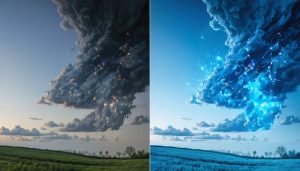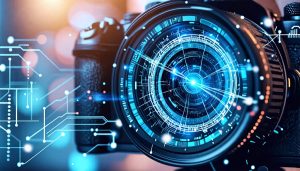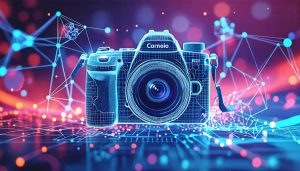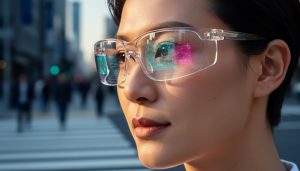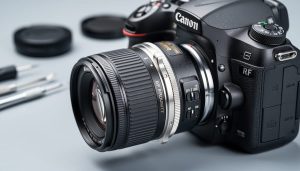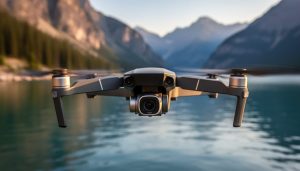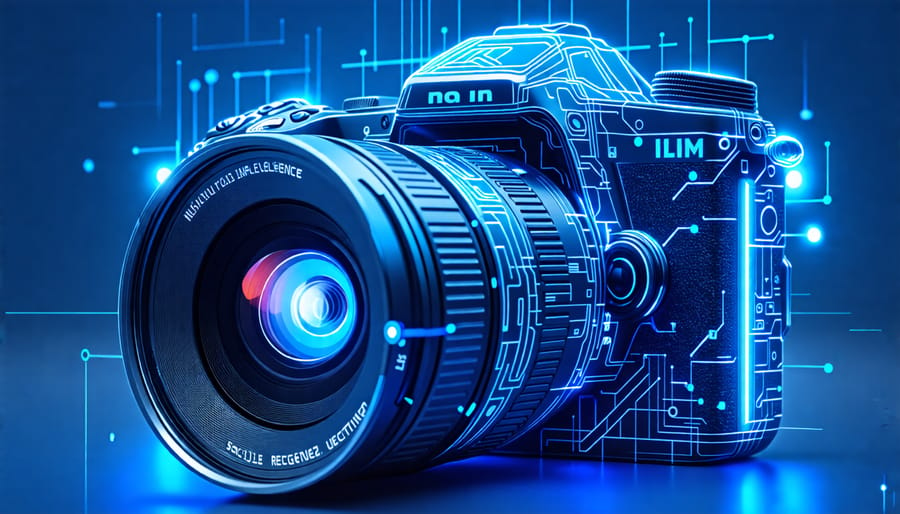
Explore automated editing tools to enhance image quality in seconds, using AI-driven software that offers seamless adjustments and filters tailored to your preferences. Experiment with AI-based composition techniques to refine your framing and focus, allowing for innovative and captivating photographic styles. Master AI-powered noise reduction to improve photo clarity, ensuring that low-light conditions don’t compromise image sharpness. Implement machine learning algorithms to organize and tag your digital collections, making it effortless to access and review your work without tedious manual sorting.
The Evolution of Camera Technology with AI
From Analog to Digital: A Brief History
The transition from analog to digital photography marked a profound shift in how images are captured and processed. In the past, photographers relied on film and darkrooms to develop their shots. With the advent of digital technology, these processes became increasingly streamlined, opening up a new world of possibilities. The evolution of digital cameras significantly changed the landscape, enabling instant feedback and greater creative control. Early AI innovations facilitated the development of advanced features like autofocus and auto-exposure, assisting photographers in achieving more precise results. As technology progressed, AI began to play a larger role, enhancing image quality and unlocking creative potential.
Smart Cameras and AI Enhancements
Imagine capturing the perfect shot every time, no matter your skill level or experience with a camera. Thanks to advancements in AI technology, smart cameras are transforming this dream into reality. With AI-powered features like auto-focus, scene optimization, and facial recognition, even a casual photo session can result in stunning, professional-quality images.
Auto-focus systems have become incredibly precise, largely thanks to AI enhancements. Gone are the days of blurry images and missed moments. Modern smart cameras can quickly and accurately lock onto subjects, adjusting the focus intelligently as the scene evolves. Consider a fast-paced wildlife photo shoot; AI ensures clarity, helping photographers capture that fleeting moment with unparalleled sharpness.
Scene optimization takes the guesswork out of settings. Cameras equipped with AI can now identify scenes and adjust settings automatically, ensuring optimal exposure and color balance. Whether you’re photographing a serene landscape or a bustling city street, the AI does the heavy lifting, allowing you to concentrate on composition and creativity. Imagine walking through a vibrant market; your camera recognizes the environment’s unique features and adapts in real-time, highlighting colors and details.
Facial recognition has also seen dramatic improvements. This feature not only helps in organizing photos but also enhances portrait photography by detecting and focusing on faces with incredible speed and accuracy. Professional photographers can save precious minutes in post-processing, while hobbyists enjoy perfectly-focused family photos right out of the camera.
These smart camera features showcase how AI is reshaping photography, making high-quality photography more accessible to everyone. As AI technology continues to evolve, so too will our capacity to capture and create unforgettable images.
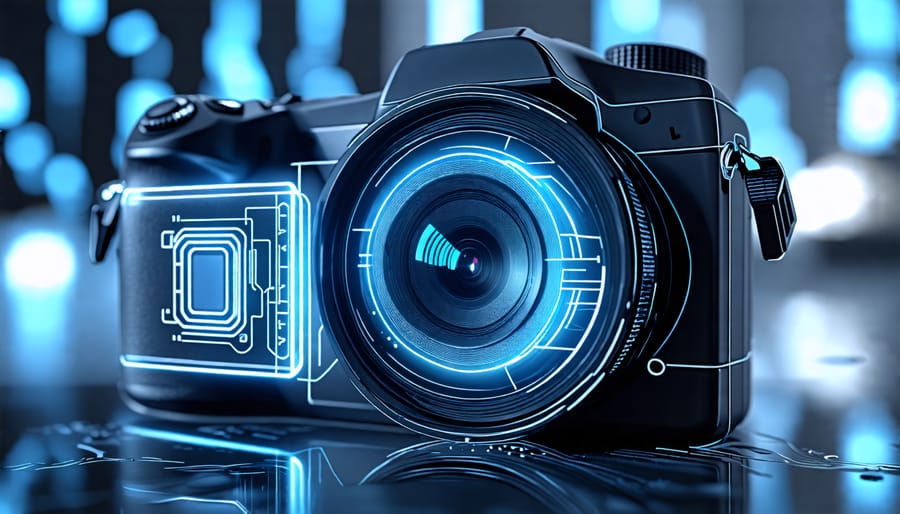
AI Tools for Post-Processing
AI-Powered Editing Software
In the realm of photography, AI-powered editing software has emerged as a game-changer, offering tools that simplify and enhance post-processing techniques, and elevate images to new heights. One popular tool, Adobe’s Photoshop, incorporates AI with features like Content-Aware Fill, which intelligently replaces unwanted elements as if by magic. Another is Luminar AI, known for its Sky Replacement tool that transforms dull landscapes into vibrant vistas with just a click. Meanwhile, Skylum’s Aurora HDR uses AI to automatically merge bracketed images, creating stunning high-dynamic-range photos.
For those seeking a streamlined experience, Topaz Labs’ AI-powered Gigapixel AI and Sharpen AI are designed to upscale images and enhance detail seamlessly. These tools cater not only to professionals looking to save time but also to enthusiasts eager to experiment and learn. AI has turned what was once meticulous manual editing into an accessible craft, encouraging photographers to explore beyond their conventional boundaries and push their creative limits.
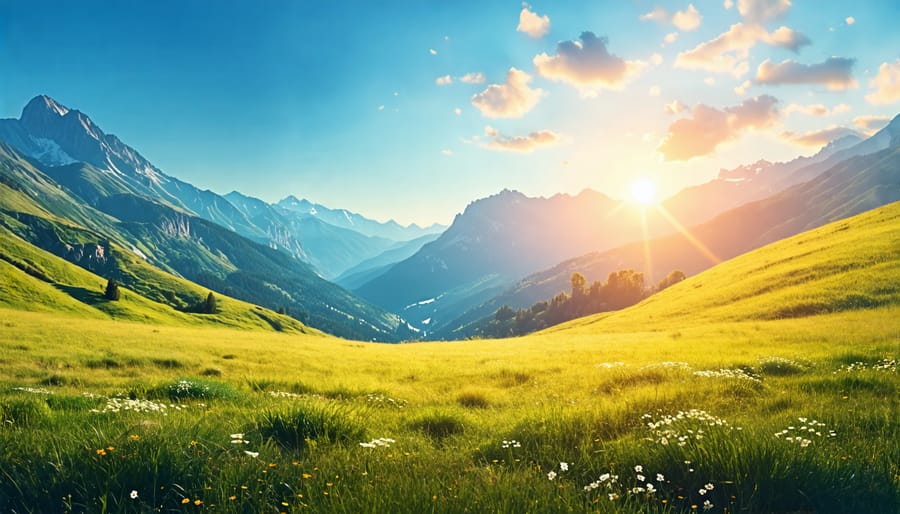
Real-World Examples
AI tools have revolutionized photography by offering innovative solutions that enhance both creativity and efficiency. For instance, landscape photographer Emily Thompson leveraged AI-based editing software to bring her vision to life, transforming underwhelming skies into breathtaking sunsets. “AI helps me save time, allowing me to focus on capturing perfect moments,” Emily shared. Portrait photographer Alex Mendes uses AI-powered post-processing to refine skin tones and lighting, ensuring a natural yet polished look. “It takes care of tedious tasks so I can concentrate on the artistic side of my work,” Alex explained.
In the world of wildlife photography, John Kim utilized AI-driven cameras capable of detecting and capturing rapid movement without sacrificing quality, enabling him to document rare animal behaviors. These examples highlight how AI tools not only simplify technical challenges but also unleash photographers’ creativity, opening new avenues for artistic expression and storytelling that were previously unobtainable. Through AI, photographers gain a powerful ally in their pursuit of capturing the perfect shot.
The Impact of AI on Professional Photography
Workflow Efficiency Through AI
Imagine spending hours perfecting the color balance of dozens of photos, manually removing blemishes, and sorting through thousands of images to find the perfect shot. For many photographers, these repetitive tasks can eclipse the creative joy of capturing moments. This is where AI steps in, transforming workflow efficiency. By automating mundane tasks, AI allows photographers to reclaim their time and focus on the art of photography.
Take, for example, AI-powered tools like Adobe’s Sensei, which can automatically sort and tag images, significantly reducing the time spent organizing photo libraries. AI also enhances efficiency in post-processing. Tools that use artificial intelligence to adjust lighting, color, and composition enable photographers to edit images in moments rather than hours. Furthermore, AI algorithms can intelligently retouch portraits, automatically smoothing skin and enhancing features with just a few clicks.
These advancements mean photographers are less bogged down by the mechanical aspects of photo editing, giving them the freedom to invest more energy into planning shoots, experimenting with new techniques, and expanding their creative portfolios. With AI handling the drudgery, photographers can rediscover their passion for storytelling through images, leveraging technology to enhance rather than hinder their artistry.
AI-Driven Creativity and New Frontiers
In the rapidly evolving world of photography, AI is proving to be a game-changer, offering tools that expand the horizon of what’s creatively possible. This isn’t just about enhancing what already exists—AI is paving the way for truly innovative techniques, particularly in computational photography. Imagine a camera that, powered by AI, understands the scene before you; it can enhance a sunset’s colors or ensure that every face in a group is perfectly lit. These AI-driven capabilities allow photographers to spend more time on creative exploration and less on technical adjustments.
A prime example of AI’s impact is the way it enables real-time photo enhancements. For instance, AI can now sharpen images or remove unwanted noise instantly. This not only saves time in post-production but also allows photographers to make adjustments on the fly, thereby enhancing spontaneity and creativity during the shoot. Additionally, AI algorithms can generate new imaging techniques, creating effects or perspectives that were previously unimaginable, transforming the art form itself. Through AI, photographers are not just capturing reality, but actively shaping new worlds of visual storytelling.
Future Trends in AI and Photography
Predicted Technological Advances
Imagine a future where your camera not only captures the perfect image but also understands and enhances the creative vision behind it. Thanks to AI, this is more than a possibility; it’s rapidly becoming a reality. Advancements in machine learning are paving the way for smart cameras that can automatically adjust settings based on the scene’s context, ensuring optimal exposure and focus. Meanwhile, software developments are enabling AI-driven editing tools that reduce the time spent in post-production. For instance, AI can analyze your photo’s composition, suggesting improvements or automatically retouching flaws, freeing you to focus on the art of photography. As we venture further into this dynamic era of AI photography trends, these innovations promise to empower photographers, ushering in a new world of creative possibilities.
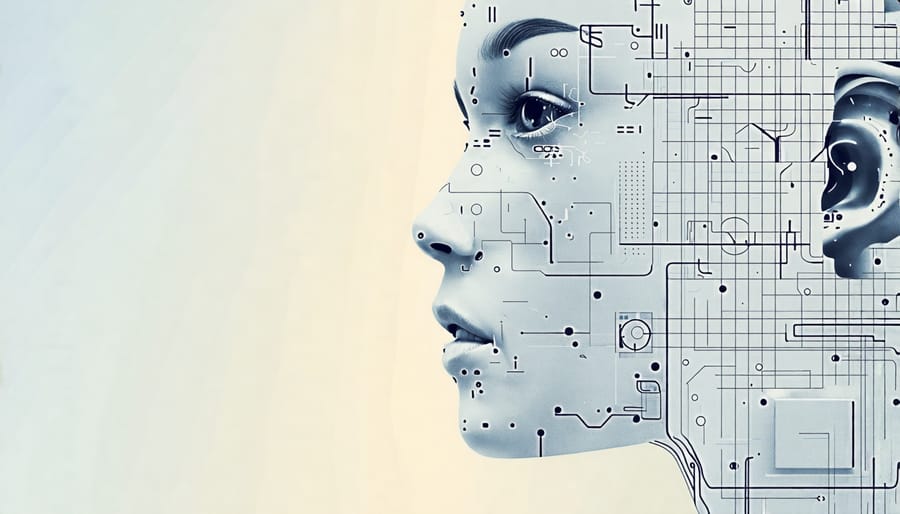
Ethical Considerations and Challenges
As photography enthusiasts and professionals explore the innovative realm of AI, they encounter both exciting possibilities and ethical dilemmas. One pressing issue is privacy. AI technologies like facial recognition can identify individuals in images, sometimes without their consent. This raises concerns about surveillance and unauthorized use of personal data, especially in public spaces. Furthermore, AI-generated images blur the line between reality and fabrication, challenging photographers and audiences alike to discern authenticity. For example, AI can simulate perfect lighting, which might mislead viewers about the original scene. In this rapidly evolving field, photographers should be keenly aware of these ethical considerations, ensuring they respect privacy and maintain the integrity of their craft. Embracing technology, such as understanding the advantages of mirrorless cameras, can enhance skills while adhering to ethical standards.
Conclusion
AI’s transformative role in photography is indeed a marvel of modern technology, offering both enthusiasts and seasoned professionals new avenues to explore their creativity and enhance their craft. As we’ve journeyed through the remarkable advances that AI brings—from revolutionizing image editing to automating complex workflows—it’s clear that these tools are not merely conveniences but powerful catalysts for creative expression. AI’s capability to intelligently enhance photos while preserving the photographer’s unique vision opens a realm where artistic ambition meets technological advance.
Picture a landscape photographer who uses AI to swiftly adjust lighting across a sequence of images, capturing the essence of a sunset’s evolving hues. Or imagine a portrait artist employing AI-driven retouching to maintain the integrity of their subject’s natural beauty while achieving stylistic perfection. These scenarios illustrate just a glimpse of what’s possible when one embraces these advancements.
We encourage you to explore and integrate AI-driven tools into your own photography practice. Whether you’re shooting your first photo or your thousandth, there’s a wealth of opportunity at your fingertips. The evolution of photography with AI is only beginning, and those who ride this wave will undoubtedly redefine what is possible in the art form. Let curiosity and experimentation guide you as you embark on this exciting journey of blending tradition with technology.



